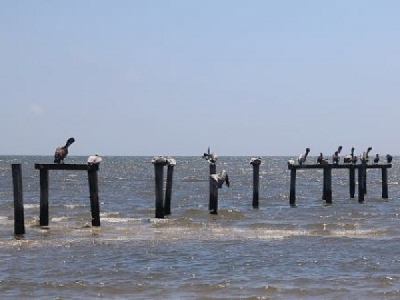
Posted on April 25, 2017
By Karla Lant, Futurism
Louisiana Governor John Bel Edwards declared a state of emergency on April 18 based on the continuous, rapid erosion of the state’s coastline. The goal of the declaration is to hasten the federal permitting process in order to get coastal restoration projects started and bring nationwide attention to the issue.
“Decades of saltwater intrusion, subsidence and rising sea levels have made the Louisiana coast the nation’s most rapidly deteriorating shoreline,” WWNO’s Travis Lux told the NPR Newscast unit. “It loses the equivalent of one football field of land every hour.”
More than half of the population of Louisiana lives on the coast, and the land is critical to the energy and maritime industries as well as trade. The pace of erosion is quickening, with the governor writing, “More than 1,800 square miles of land between 1932 and 2010, including 300 square miles of marshland between 2004 and 2008 alone.” He continues to write in the declaration that if no action is taken right now, within 50 years, “2,250 square miles of coastal Louisiana is expected to be lost.”
Lux also told NPR that the governor is hoping that the declaration will enable coastal projects to proceed: “The state has a plan to implement more than 100 restoration and protection projects — like rebuilding marshes and barrier islands — but some of those projects are getting slowed down by federal environmental permits.”
The Perfect Storm
Unfortunately for everyone involved, the Louisiana coast is the eye of a perfect storm for land loss caused by multiple factors, including climate change, natural river delta patterns, damage from oil and gas industry projects, coastal changes caused by the loss of marsh and mangrove ecosystems, and hydrological mismanagement in general. With all of these factors in play, one of the worst problems becomes managing the crisis as each player in the drama seeks to avoid responsibility and shift the blame elsewhere.
The projects the governor is focusing on are part of the “Master Plan,” a 50-year, $50 billion plan that was approved this month by a unanimous state panel. According to The Times-Picayune, the plan “relies largely on money from settlement of the 2010 BP oil spill litigation to speed restoration of coastal land and wetlands and protect them from hurricanes.” The state of emergency is intended to force the federal government to cooperate with the Master Plan, possibly providing funding — and perhaps overlooking its environmental flaws.
However, it’s not entirely clear that the Master Plan will work. The Climate Change Law and Policy Project of the Louisiana State University Law Center argues that it won’t, for several reasons:
– The Master Plan proposes to slow the loss of land using river diversions and dredging; if possible, this will raise only land at the edge of the coast to sea level, or slightly higher, and not interior land that will be flooded in the future as the land subsides.
– Building land at the edges of the coast will not prevent inland property from losing elevation; because how far above sea level something is determines how high the flood risk is, the risk will not be reduced by slowing land loss.
– The Project opposes dredging and sediment pumping to build wetlands which would need to be repeated and would leave a huge carbon footprint.
– The Project thinks the proposed river diversions are unlikely to work and should be abandoned.
The Master Plan also proposes massive levee projects which will cost billions and have to run through huge areas of open water, causing massive environmental harm; it is unlikely to be built at all, even though the success of the plan rests on it. Since success is predicated on this one unlikely piece of the Master Plan, it should be scrapped unless they can prove it will be executed and workable.
Instead, the LSU Law Center makes these recommendations:
– The first priority should be “the maintenance of the post-Katrina levee and pumping stations.”
– “In the longer term, required lifts for the levees will run into hundreds of millions of dollars.”
– The Project agrees with the Master Plan idea of “putting the sediment dredged from the Mississippi River into the wetlands along the river to provide a wave buffer for the existing levees.”
– “Other low cost projects such as closing old canals by pushing the spoil bank into the canal may also make sense.”
The critique of the Master Plan from the LSU Law Center ends with this quote regarding the grim reality of the situation, particularly in light of climate change:
“In the long term, the state must acknowledge that large areas of the coast cannot safely support communities and businesses. Surrounding communities with ring levees or elevating houses makes no sense if they end up as islands in the Gulf on every high tide. If the federal government withdraws most of its funding from disaster relief, as conservative foundations are urging, or reduces the subsidy to the National Flood Insurance Program, getting people out of harm’s way will have to become the first priority for coastal spending in Louisiana.”
Source: Futurism





